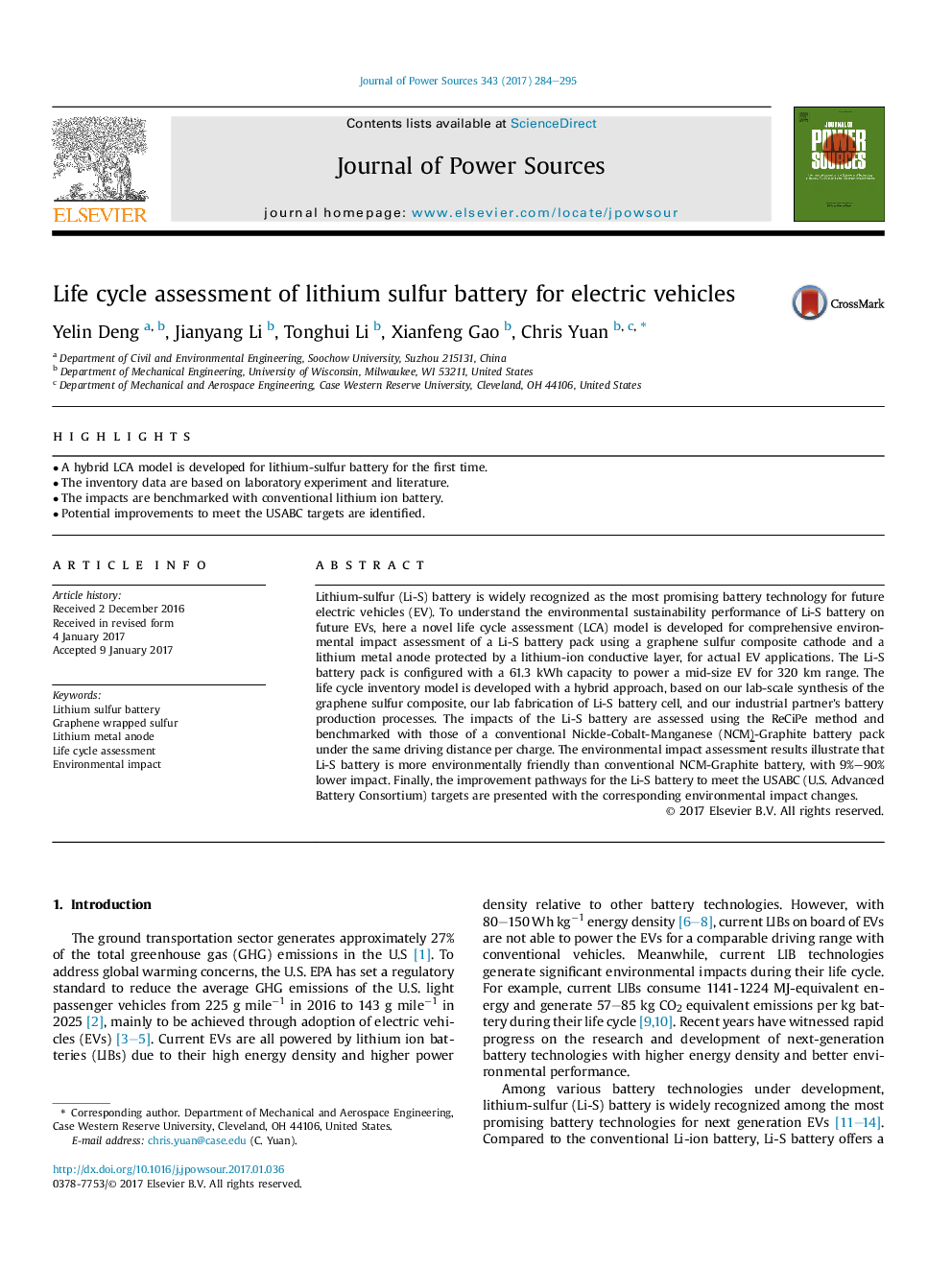| Article ID | Journal | Published Year | Pages | File Type |
|---|---|---|---|---|
| 5149420 | Journal of Power Sources | 2017 | 12 Pages |
Abstract
Lithium-sulfur (Li-S) battery is widely recognized as the most promising battery technology for future electric vehicles (EV). To understand the environmental sustainability performance of Li-S battery on future EVs, here a novel life cycle assessment (LCA) model is developed for comprehensive environmental impact assessment of a Li-S battery pack using a graphene sulfur composite cathode and a lithium metal anode protected by a lithium-ion conductive layer, for actual EV applications. The Li-S battery pack is configured with a 61.3 kWh capacity to power a mid-size EV for 320Â km range. The life cycle inventory model is developed with a hybrid approach, based on our lab-scale synthesis of the graphene sulfur composite, our lab fabrication of Li-S battery cell, and our industrial partner's battery production processes. The impacts of the Li-S battery are assessed using the ReCiPe method and benchmarked with those of a conventional Nickle-Cobalt-Manganese (NCM)-Graphite battery pack under the same driving distance per charge. The environmental impact assessment results illustrate that Li-S battery is more environmentally friendly than conventional NCM-Graphite battery, with 9%-90% lower impact. Finally, the improvement pathways for the Li-S battery to meet the USABC (U.S. Advanced Battery Consortium) targets are presented with the corresponding environmental impact changes.
Related Topics
Physical Sciences and Engineering
Chemistry
Electrochemistry
Authors
Yelin Deng, Jianyang Li, Tonghui Li, Xianfeng Gao, Chris Yuan,
